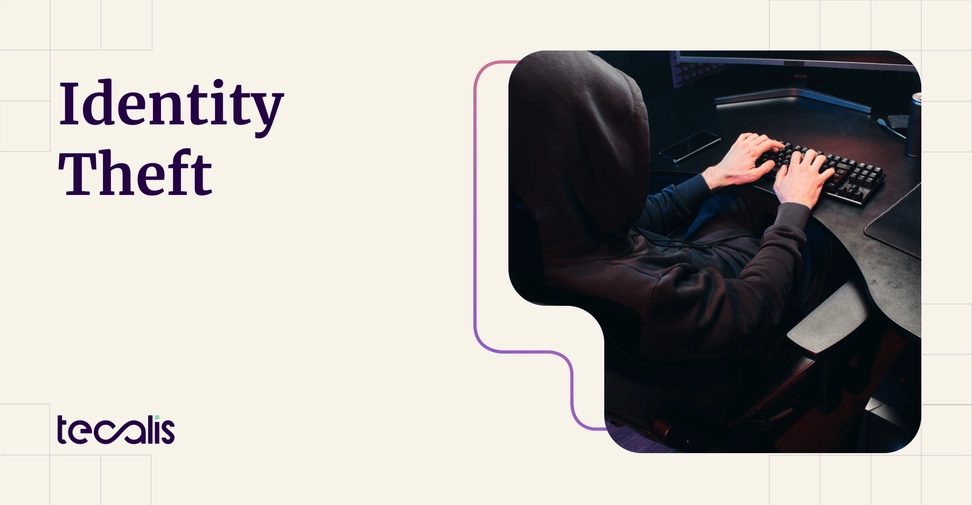Index
Get the latest news right in your inbox
Identity theft is more common than it might seem. Living in the digital world presents a host of conveniences, but also some real financial dangers. So you review your bank and credit card statements with a fine-tooth comb and check your credit report regularly—just to make sure nothing is amiss. You create strong passwords as a matter of habit and use a password manager to be ultra-safe. You enable two-factor authentication on your apps and accounts whenever possible. You may have even purchased personal identity theft protection. Smart move. Identity theft is on the rise and fraudsters are getting more creative and bolder all the time.
But as a business leader, your job isn’t just to protect yourself. It’s incumbent upon you to protect your customers, too. Brand trust drives new customer acquisition and customer loyalty. If you want to grow your business, you have to earn it. And one way to increase trust among your customers is to implement rigorous cybersecurity protocols.
What is identity theft?

Identity theft is a crime of impersonation of the real identity of a natural or legal person that consists of illegally obtaining key information in order to impersonate another person without that person's consent.
This confidential information usually consists largely of access credentials such as username and password. Despite attempts by many companies to establish MFA (Multi-Factor Authentication) models based on SCA (Strong Customer Authentication) such as sending OTP (One-Time Password) passwords to cell phones or emails, hackers and other criminals manage to circumvent these controls using techniques such as SIM Swapping.
The purpose of identity theft is generally to carry out financial transactions from the victims' bank accounts to their own, although on other occasions online purchases are made, health information is accessed or even loans or credit cards are applied for in the name of the victim, leaving them in debt for money they never enjoyed.
How identity theft is carried out
Attackers use a variety of methods to obtain the information with which users access their products, services and platforms. From phishing to other techniques on second-hand portals to obtaining information from their victims' profiles on social networks, the methods for obtaining a panel of different useful information to generate access are very disparate.
There are different types of identity theft that are categorized according to the objective: theft to carry out a financial attack, those aimed at carrying out criminal activities by hiding the real identity of the offender and exchanging it for that of the identity theft victim, the theft of medical information or those relating to children's identities.
Gone are the methods of stealing wallets, purses or breaking into homes to obtain the victim's identity documents. I am sure that at some point you have taken a photograph of your identity document. Well, that's where these fraudsters find the loopholes to gradually collect the various proofs to impersonate other people.
Although they continue to occur, the focus is now on identity theft on the Internet, which is growing year after year and can be avoided by companies, businesses and organizations that allow their customers to operate remotely if they establish the appropriate identity controls in their acquisition, authentication and electronic signature processes.
The Cost of Inadequate Cybersecurity
According to the Ponemon Institute, a single data breach cost a business $3.86 million in 2020. Today, that cost has risen to $4.2 million. That cost doesn’t include the loss of goodwill and customer trust victims of cybercrime suffer. Bear in mind that common business insurance policies don’t cover the cost of data breaches. You’ll need a specialized cybersecurity insurance policy if you want that kind of protection.
How Much Should You Spend on Cybersecurity?

According to a study performed by Deloitte, one of the world’s largest risk analysis and advisory firms, businesses spent about 10.9% of their IT budgets on cybersecurity in 2020—up from 10.1% in 2019. But that figure only represents about 0.48% of their annual revenue. Compare what they spend on marketing.
Deloitte reports that the average business spends over 11% of its total revenue on marketing. Some industries, including retail and health care, are even bigger spenders. Sound lopsided to you? We agree. You can send out emails and tweets every day, but that won’t win you back all of the customer confidence you lose when you’ve suffered a data breach.
Building Trust Through Robust Security
Trust building begins at the very start of the customer journey, well before customers even consider making a purchase. The digital onboarding process is giving answers to what kind of issues and more. And that’s where your cybersecurity measures should begin, too. Trust and cybersecurity go hand in hand. The more transparent you are around your cybersecurity efforts, the more likely you are to gain customers’ confidence.
In other words, don’t just do cybersecurity. Talk about it. It’s important to reassure customers from the outset that you take protecting their privacy seriously. Establishing strong KYC (Know Your Customer) systems based on fully compliant technology to prevent any attempt of identity theft is not only an option but a legal obligation in virtually all markets and regions.
Your website should prominently include information about how your company manages sensitive data. Posting your privacy policy is a must. But you should go at least one step further. Highlighting your cybersecurity measures in detail is not only a sign of customer respect, it can be a competitive advantage.
Some companies view cybersecurity as a necessary evil—an expense only, that doesn’t contribute to revenue or growth. But the opposite is true. Cybersecurity should be part of your customer acquisition and retention strategies.
Cybersecurity at Every Point of the Customer Journey

Winning customers is a complicated endeavor. You can invest in search engine optimization to bring them to your website. But if you don’t provide an exceptional digital experience, you can lose them at any time. That’s why you need a comprehensive plan to keep potential customers on the path to purchase, manage risk in your business, and maintain compliance with government and industry regulations.
A robust cybersecurity system touches every mile of the customer journey, from initial registration and identity verification to payment to the ongoing communications that nurture your customer relationships. Customer expectations are changing all the time and increasingly, trusting the companies they do business with is a top priority.
Unfortunately, many business executives believe they earn a higher level of trust than they actually do. A 2022 study by PWC revealed that “Almost nine in 10 (87%) business executives think consumers have a high level of trust in their business. But only 30% of consumers say they do.” Closing that gap should be of paramount concern to business leaders.
Businesses of every size and kind need fully integrated solutions for managing security and building customer trust. Systems that include these top features and are customizable to your company’s needs offer the best protection:
- Identity verification
- Electronic signature
- RPA Automation
- Authentication
- Certified Communication
- Anti-Fraud Controls
Many companies do not have the native expertise, employee bandwidth or budget to build their own systems. However, RegTech trusted service and systems providers address these issues by offering innovative and comprehensive solutions to businesses around the world.
Deploying scalable solutions has helped businesses shore up two of their most valuable assets: a smooth, seamless digital experience and increased customer confidence through impassable security controls.

























